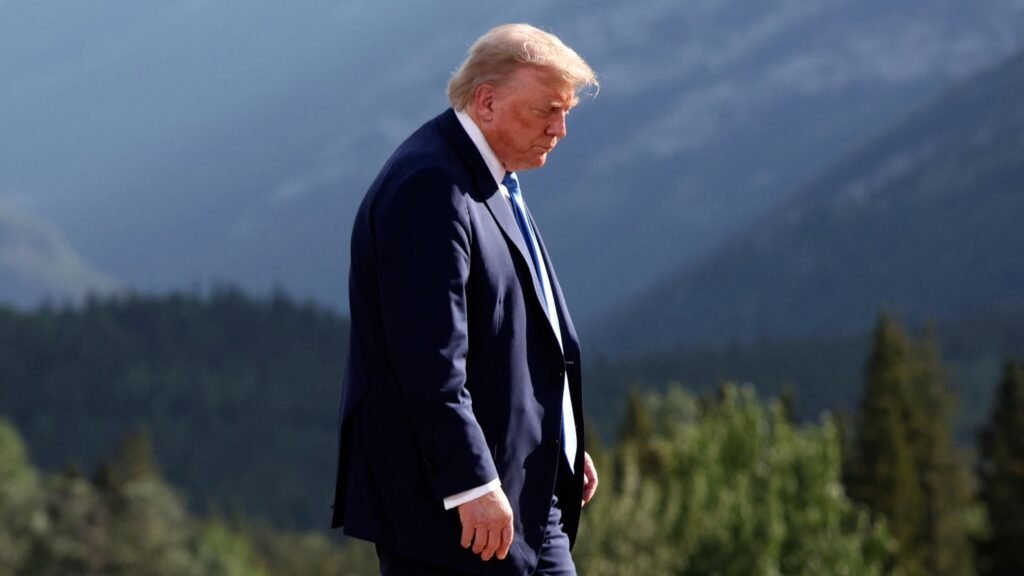The once-solid alliance between Donald Trump and the MAGA (Make America Great Again) movement is showing clear signs of strain. What began as a loyal, powerful coalition is now unraveling, revealing internal disagreements, rival ambitions, and contrasting visions for the Republican Party’s future.
At the heart of this Trump MAGA conflict lies a growing split between Trump loyalists and the ideological purists who believe the movement has outgrown its founder. While Trump remains the de facto leader of the GOP in many circles, voices within the MAGA base are beginning to question his decisions, political endorsements, and long-term influence.
This family feud could redefine the conservative landscape ahead of the 2024 and 2028 elections.
How the Trump MAGA Conflict Began
The Trump MAGA conflict didn’t erupt overnight. The tension has been building quietly since the end of Trump’s presidency. After the 2020 election, some MAGA activists expected Trump to take a more aggressive stance in contesting the results, while others hoped he would pass the torch to new leaders who could carry the torch of America First without the baggage.
Instead, Trump doubled down on his personal brand, launching Truth Social, endorsing candidates across the country—some of whom failed spectacularly—and remaining the focal point of Republican politics.
That’s where the conflict began. Many in the MAGA base started to feel that Trump’s involvement was hurting the movement rather than helping it.
Key Flashpoints in the Family Feud
Several events have highlighted the growing rift between Trump and the MAGA faithful:
1. Endorsements That Backfired
Trump’s endorsement of candidates like Dr. Mehmet Oz in Pennsylvania and Herschel Walker in Georgia caused confusion among core MAGA supporters. Many saw these figures as “RINOs” (Republicans in Name Only) or lacking true grassroots conservative values.
When these candidates lost, some in the movement blamed Trump, arguing that his picks were based more on loyalty and celebrity status than policy alignment or electability.
2. January 6 and the Aftermath
The Capitol riot further complicated Trump’s image. While diehard supporters rallied around him, others in the movement distanced themselves, calling for a refocusing on policy, not personality.
Trump’s inconsistent messaging—first praising, then distancing himself from the rioters—angered both sides of the MAGA spectrum. Activists who went to jail for their roles in the protests have expressed disappointment at the lack of visible support from Trump.
3. The Rise of Ron DeSantis
Florida Governor Ron DeSantis, once a Trump protege, has increasingly been seen as a more polished version of MAGA—tough on immigration, critical of COVID lockdowns, and fiercely anti-woke.
As DeSantis gained popularity, Trump responded with personal attacks and nicknames like “DeSanctimonious,” which didn’t sit well with many in the MAGA base. Some saw it as petty and divisive, especially since DeSantis had been one of the most effective Republican governors.
4. Truth Social vs. Free Speech
Trump’s media platform, Truth Social, was designed as a free speech alternative to Twitter. But it has faced criticism from MAGA influencers who say the platform censors dissent and suppresses criticism of Trump.
This irony—of a “free speech” platform limiting voices—has become a sticking point for grassroots activists who are increasingly vocal on platforms like X (formerly Twitter) and Rumble.
Influencers Turning Away
Several right-wing influencers and MAGA thought leaders have recently shifted their tone on Trump. Once vocal advocates, they now express frustration with his direction.

Popular podcaster Steve Bannon, though still generally supportive, has called out Trump for surrounding himself with establishment figures. Meanwhile, figures like Candace Owens, Alex Jones, and even former allies like Kari Lake have made statements that suggest they’re open to alternative leaders.
The sentiment growing among these influencers is clear: The MAGA movement is bigger than Trump.
A Divide Over Strategy
The Trump MAGA conflict also reflects a deeper divide in political strategy:
| Trump’s Approach | Grassroots MAGA’s View |
|---|---|
| Loyalty-based endorsements | Policy-first candidates |
| Media stunts and rallies | Local organizing and legislation |
| Personal brand building | Movement-building for long-term change |
Many younger conservatives and activists are more interested in issues like Big Tech censorship, border security, education reform, and ending globalist policies. They argue that Trump’s personality-driven approach often overshadows these serious concerns.
The 2024 Election and the Future of MAGA
As the 2024 election looms, the question remains: Can Trump unite the movement, or has MAGA outgrown its creator?
Polling still shows Trump leading in the Republican primary by wide margins. But there are cracks beneath the surface. In states like Iowa and New Hampshire, many voters are considering alternatives—like DeSantis, Vivek Ramaswamy, or even outsider candidates who promise to continue the America First agenda without the drama.
At the same time, GOP mega-donors and political strategists are worried. A fractured base could lead to poor turnout, infighting, or even the rise of a third-party challenger.
The “Post-Trump” MAGA Movement?
Some believe the MAGA movement is entering its next phase—one not led by Trump, but inspired by him.
This post-Trump version of MAGA focuses more on ideology than personality. Its leaders are younger, more tech-savvy, and often more disciplined in messaging. They champion policies like:
- Ending forever wars
- Prioritizing domestic manufacturing
- Shutting down the Department of Education
- Fighting the rise of digital surveillance
- Promoting strong families and faith-based values
In contrast, Trump continues to dominate headlines with legal battles, media fights, and attention-grabbing remarks. For some, it’s entertaining. For others, it’s a distraction.
Trump Responds to the Criticism
Trump, never one to stay silent, has responded to the growing criticism with typical bravado. In speeches and Truth Social posts, he downplays the rift and claims that any disagreement within MAGA is the result of “deep state infiltration” or “fake news.”
He continues to insist that he’s the only one who can defeat the Democrats in 2024 and “drain the swamp” once and for all.
But for many in the movement, that promise has started to ring hollow.
What This Means for the GOP
The Trump MAGA conflict is more than just a family argument—it’s a defining moment for the Republican Party.
Will the GOP continue to be shaped in Trump’s image, or will it evolve into a broader populist-conservative coalition that can survive beyond one man’s political career?
Party insiders are watching closely. The outcome of this feud will influence:
- The GOP’s ability to attract independent voters
- Congressional and Senate races in swing states
- The Republican National Committee’s messaging and funding strategies
- The future of conservative media and digital activism
A divided base could spell disaster in close races. But a redefined, focused, post-Trump MAGA movement could bring in a new era of energized conservative voters.
Final Thoughts
The Trump MAGA conflict is a sign that the conservative movement in America is undergoing a major transformation. While Donald Trump remains a towering figure in Republican politics, the MAGA movement he helped ignite is no longer marching in lockstep.
What comes next is uncertain. Will the rift deepen and lead to a total fracture? Or will Trump find a way to realign himself with the evolving priorities of the movement he once led?
One thing is clear: the future of the GOP—and possibly the country—may depend on how this family feud is resolved.
Read Next – Ryan Routh Assassination Attempt: What Happened Next






